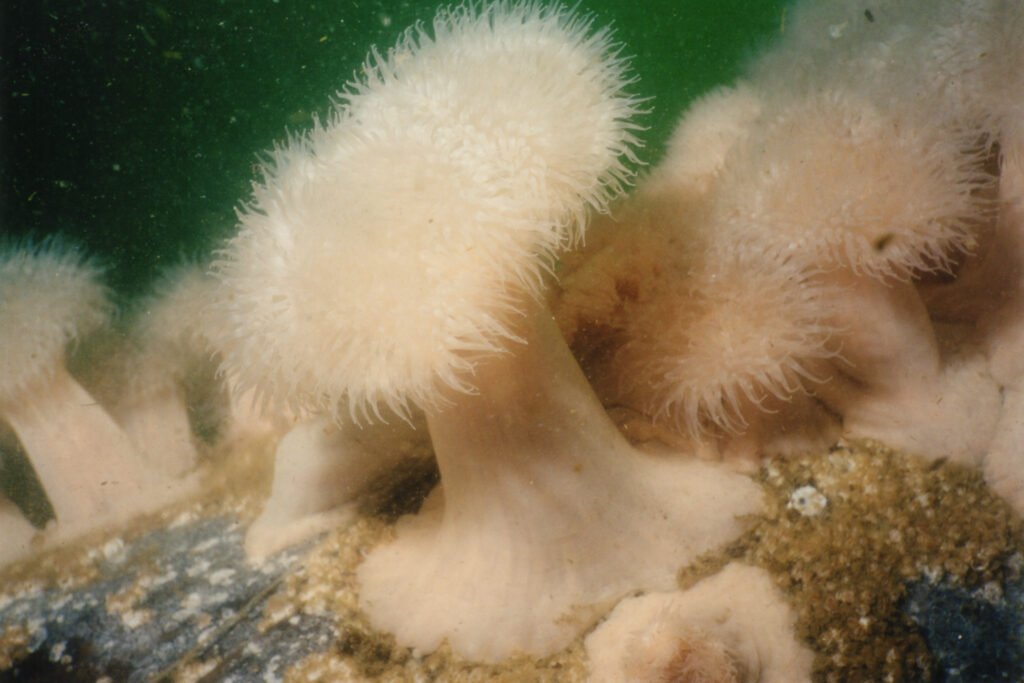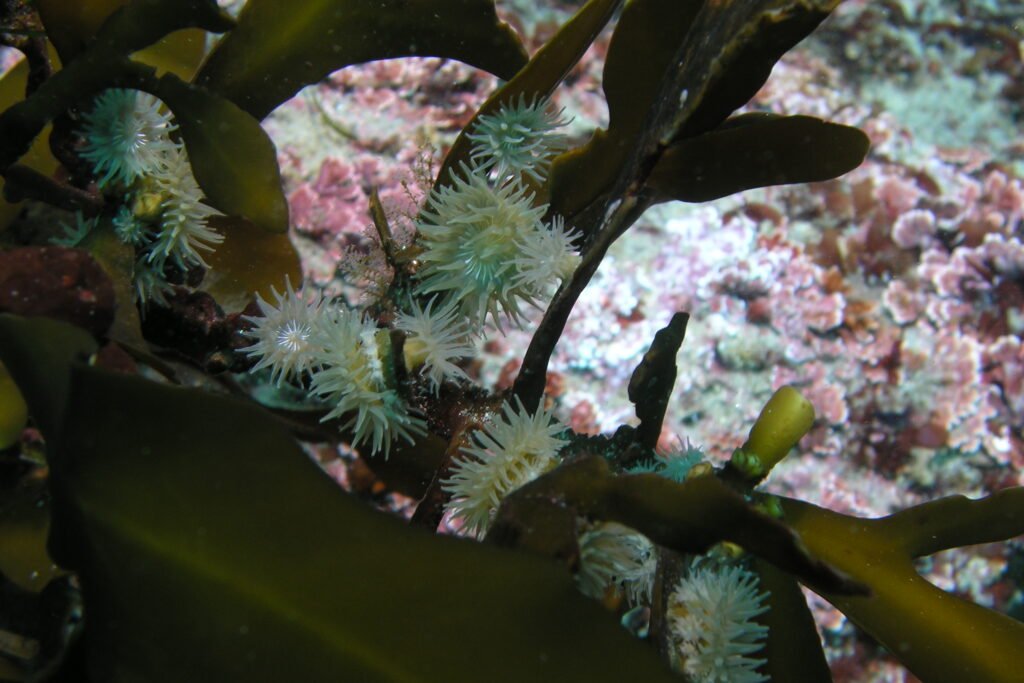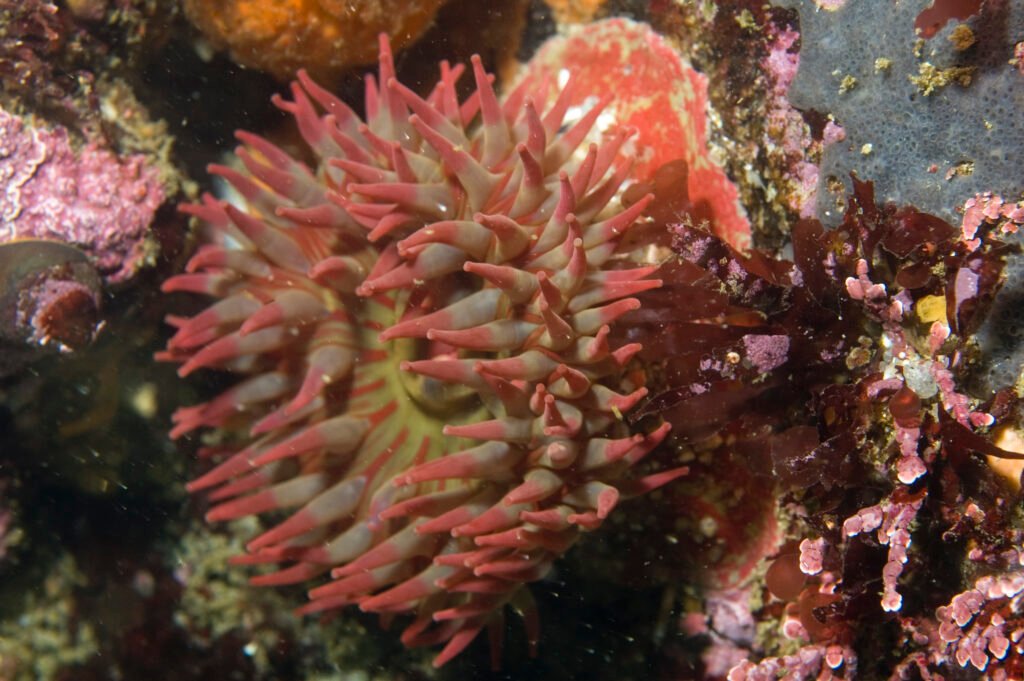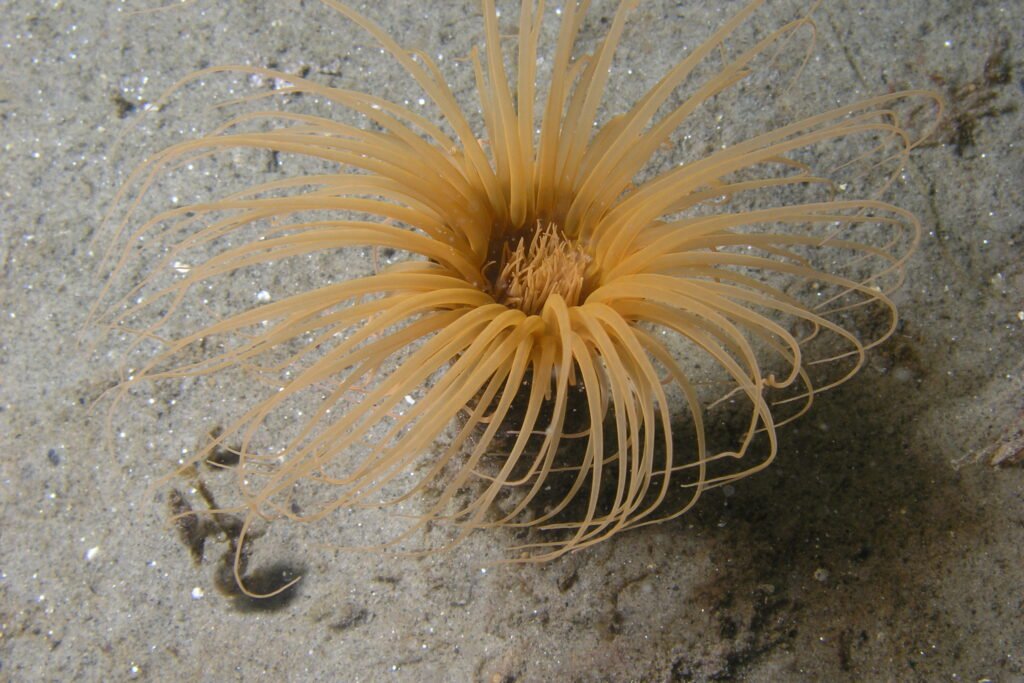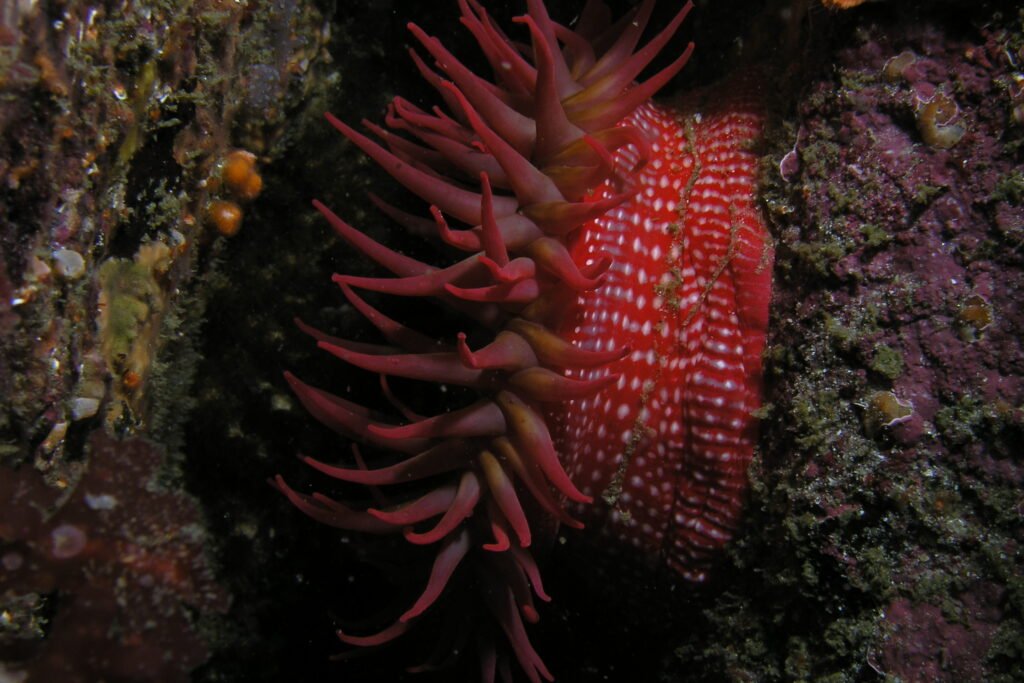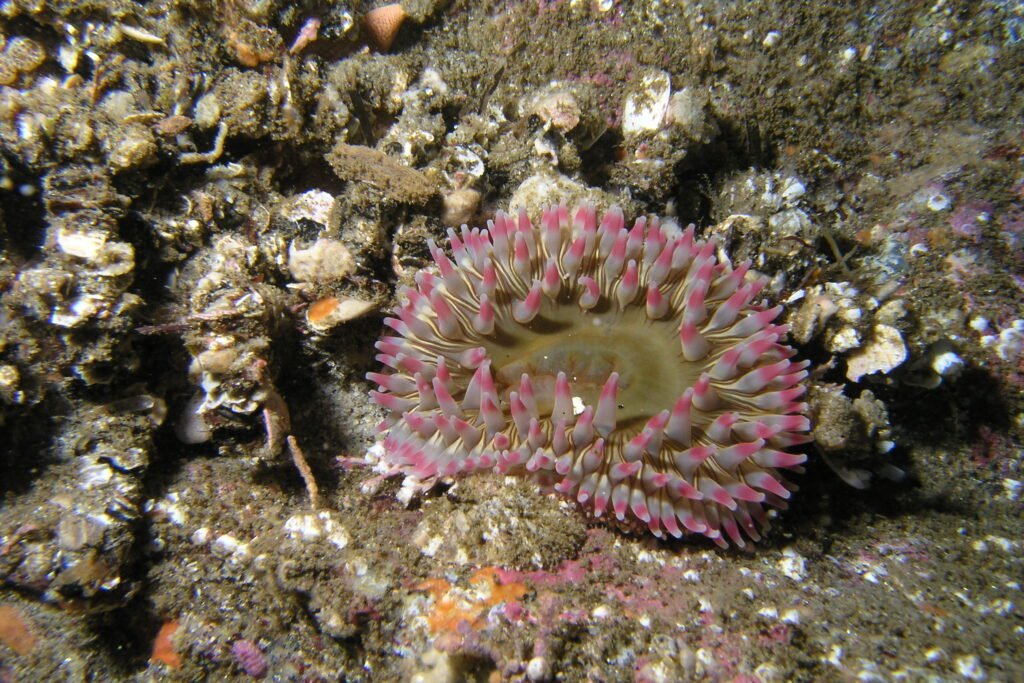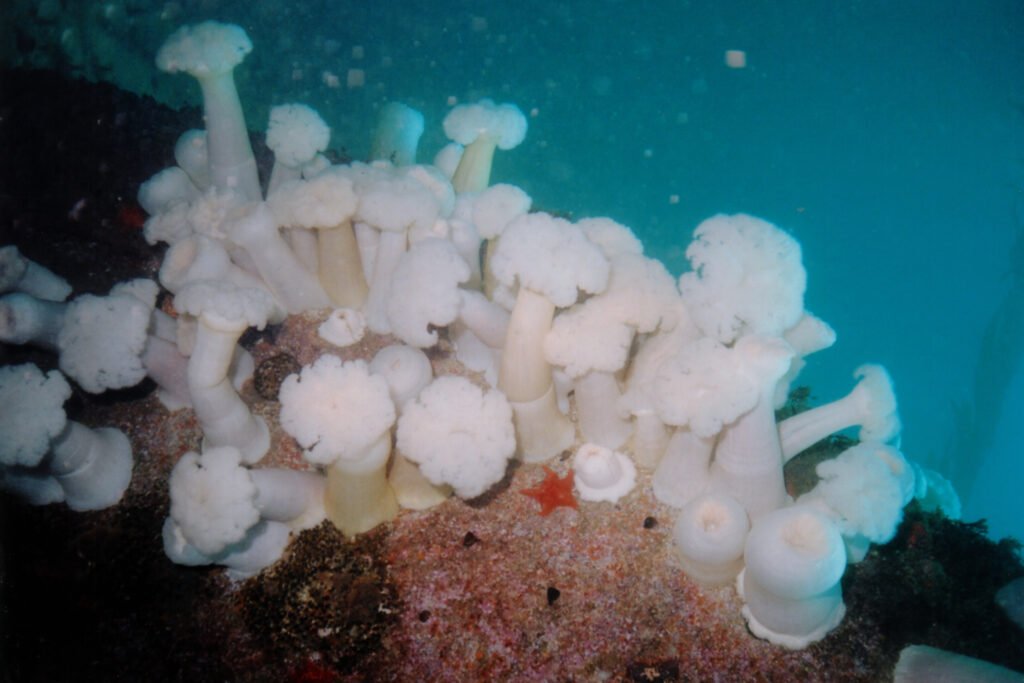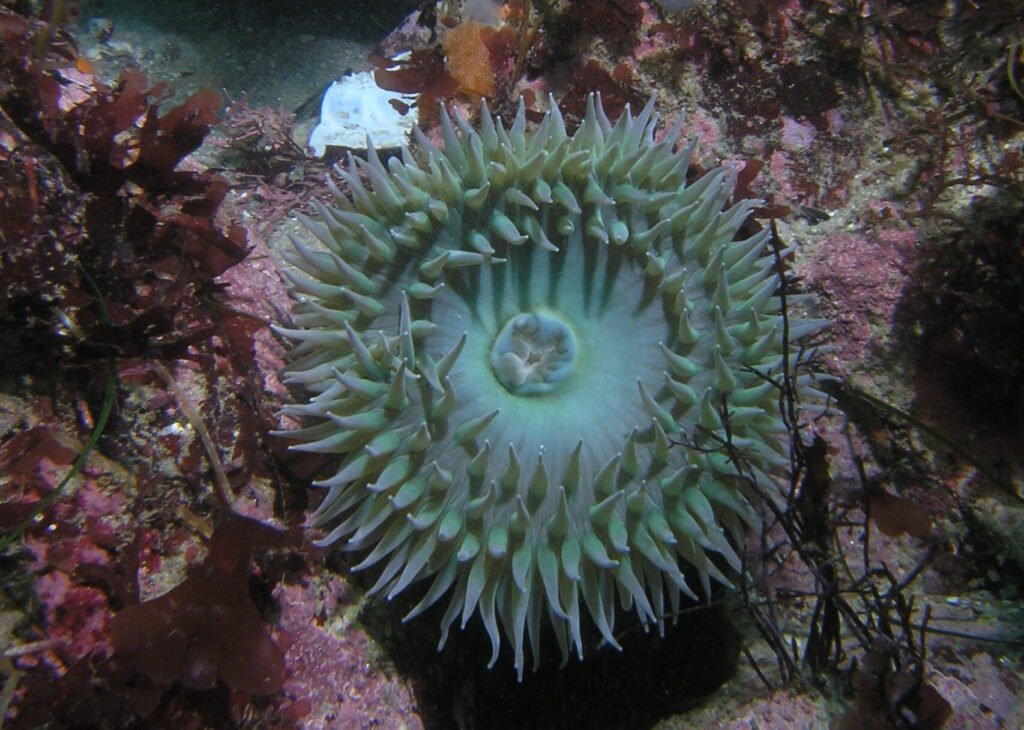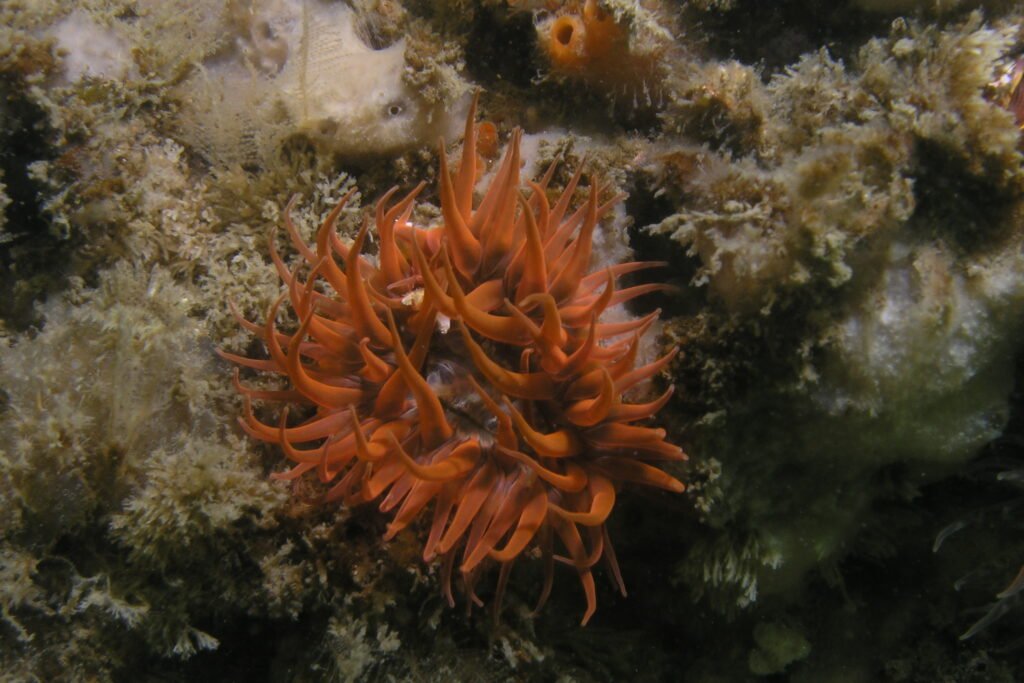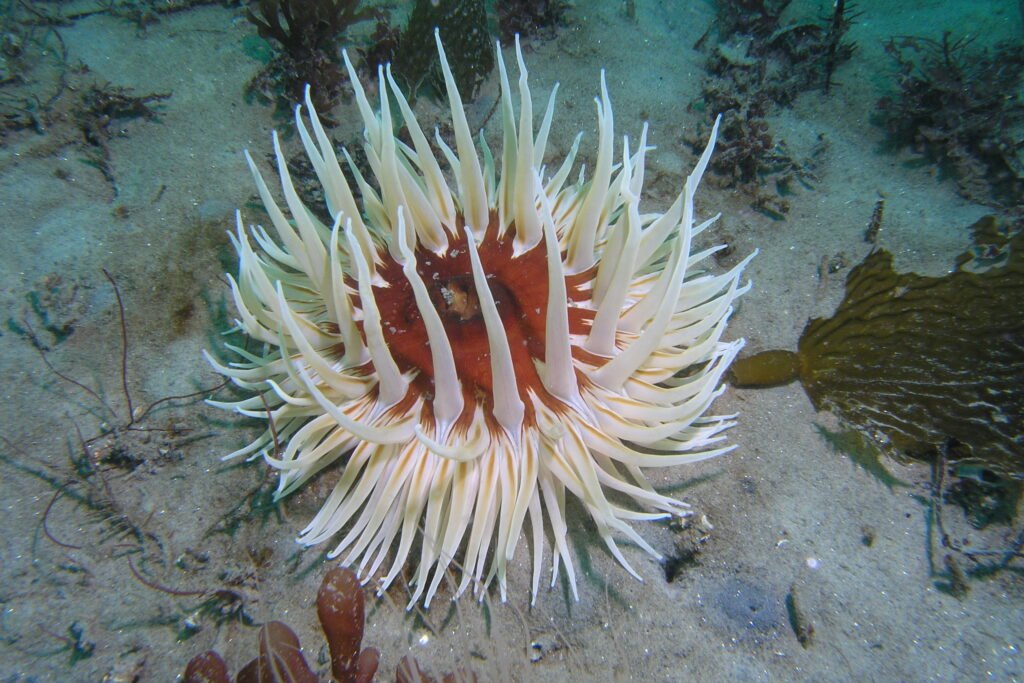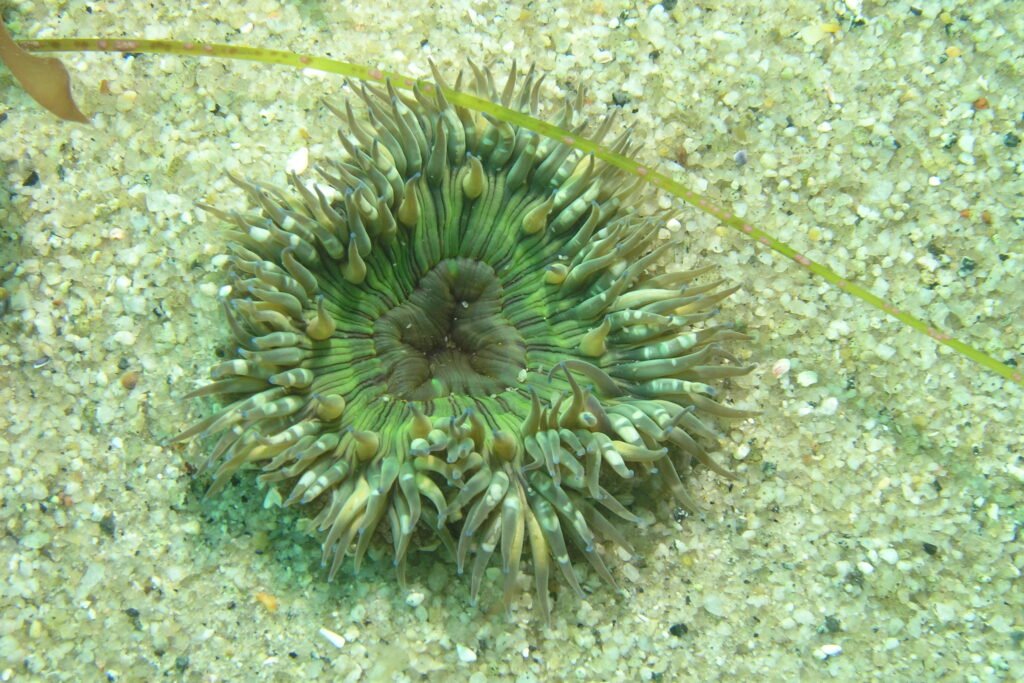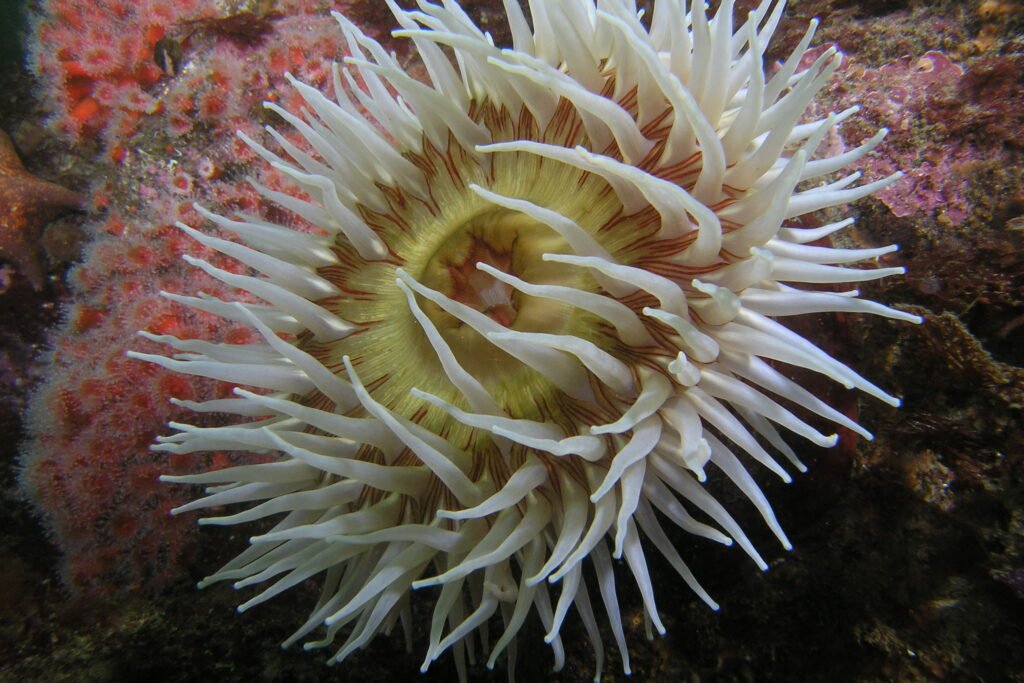Physical Description
White-plumed anemones (Metridium senile) are medium to large-sized invertebrates with a diameter ranging from 10 to 30 centimeters. They have a muscular column topped with a ring of long, slender tentacles, often colored in shades of white or cream.
Habitat and Geographical Range
White-plumed anemones are commonly found along the coasts of North America and Europe, inhabiting rocky substrates in intertidal zones and shallow waters. They can also be found in deeper waters, up to depths of 40 meters.
Diet and Reproduction
As carnivorous organisms, white-plumed anemones primarily feed on small fish, crustaceans, and plankton. They capture prey using their tentacles, which are armed with stinging cells called nematocysts. Reproduction typically occurs through external fertilization, where eggs and sperm are released into the water column, resulting in the development of larvae.
Physical Threat to Humans
While white-plumed anemones are not considered dangerous to humans, they possess venomous nematocysts in their tentacles that can cause irritation or allergic reactions if touched. It’s advisable to avoid direct contact with these creatures to prevent any potential discomfort.
